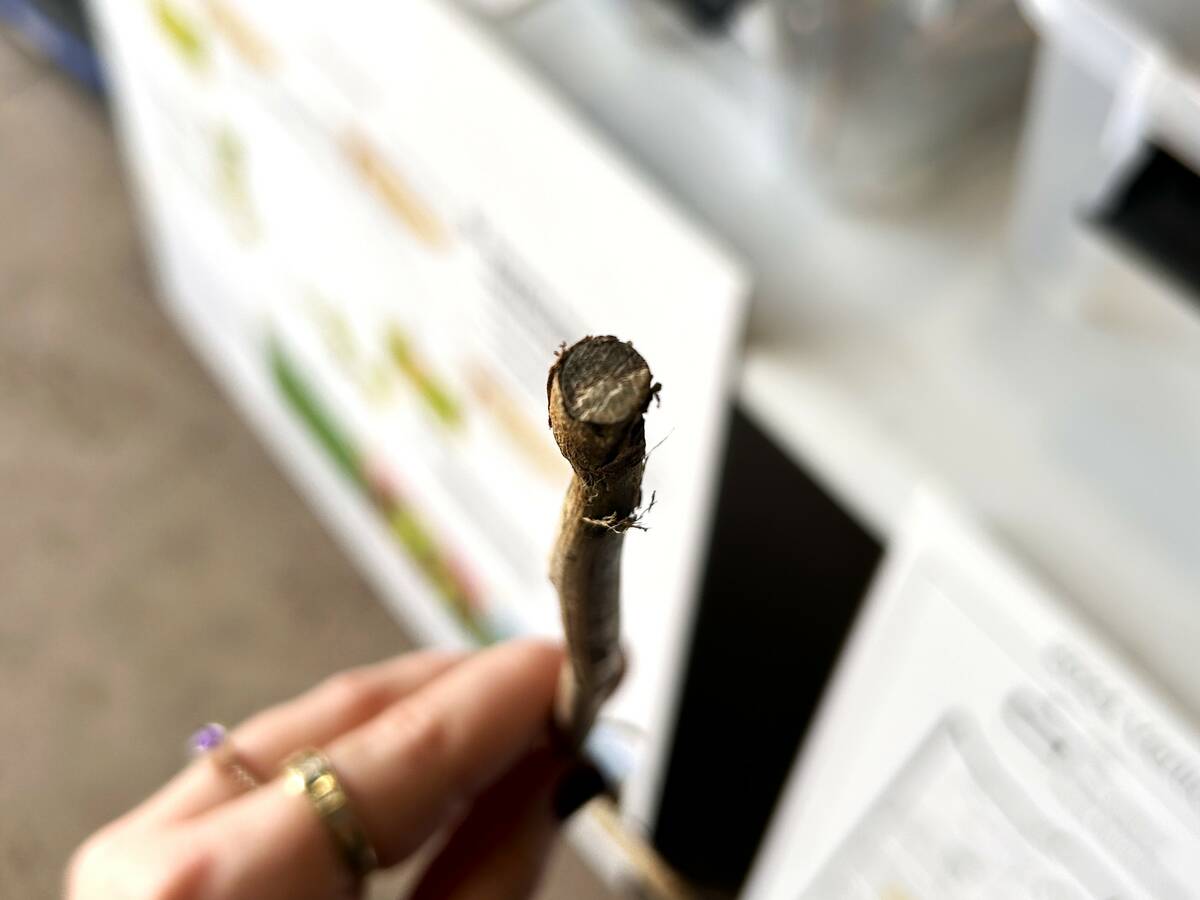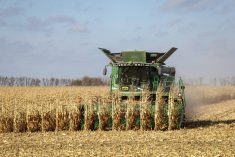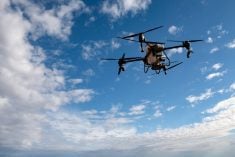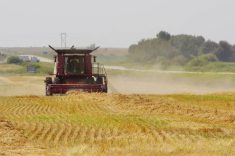The fall weed control season offers a chance to be proactive in managing herbicide resistance.
That was one message from Wes Lewis, Manitoba sales representative with Gowan Canada, during Manitoba Agriculture’s Crop Talk webinar in early October. Having spent more than 16 years in the agriculture industry, Lewis knows his herbicides.
“Our objectives with Gowan are to help growers manage weed resistance through the 2025 crop year,” he said. “But not just through then – to manage weed resistance in general.”
Read Also

Manitoba canola embattled by verticillium
Verticillium stripe pressure has been growing in Manitoba, and canola farmers still have precious few tools to protect their crop from the disease.
Why it matters: Fall weed control is more important this year because wet conditions this spring prevented many producers from spraying at the best time.
Kochia has been a persistent problem for years. It pops up in saline patches and has a biological proclivity for overcoming chemical control. Glyphosate-resistant kochia had made its mark in Manitoba over the last decade.
“This year it was really evident,” Lewis said, adding that wild oats were also a problem.
Both weeds are top of mind in the resistance conversation: kochia for its creeping victory over Group 9 chemistries and wild oats for their widespread resistance to Groups 1 and 2.
“We need to use as many tools as we have within the industry and as growers to really help fight back the resistance that is a problem,” Lewis said.
Product breakdown
Avadex (Group 15) and Fortress (Groups 3 and 15) are ahead of some resistance worries, for now.
Both are marketed by Gowan as a pre-emergent base in spring herbicide layering to relieve pressure on in-crop application. Avadex is noted in particular for resistance management in wild oats. Both are also used in fall.
Proper rates, record keeping and good crop and herbicide rotations are important, said Lewis. Avadex, Edge (Group 3) and Fortress have unique benefits in terms of management.
“When you’re looking at these benefits … from a resistance management standpoint, they’re effective. They’re unique groups, and growers are starting to incorporate them more.”
Avadex and Fortress create a herbicide layer in the soil, which is crucial to control wild oats, Lewis said. While Avadex focuses on shoots, Edge focuses on roots. With Avadex, the goal is for weeds to grow through the herbicide layer, which kills them.
Fortress does the same thing, but also focuses on broadleaf weeds. A clay carrier helps bring the product through stubble and in contact with the soil, where it binds to create the key herbicide layer.
To assess the effectiveness of these products, farmers can conduct soil scrapes, in which they peel back the top layer of soil to see if the product is working.
When it comes to application guidelines, Lewis said proper timing and method are important for optimal results.
Fall 2024
Early October was the ideal time to start fall applications, he noted, particularly in light of favourable weather conditions.
“We’ve had a really nice fall where temperatures have been really warm and quite nice. The harvest is well underway and kind of nearing wrapping up, and it should allow growers an opportunity to get onto their fields this fall and get those applications done and get prepped for 2025.”
Spraying later is also acceptable.
“Better to have some product on and know you’re going to get some protection moving into the spring,” Lewis said, emphasizing the unpredictability of spring weather.
Shallow incorporation is key for effective herbicide action — half an inch for Avadex and Fortress. Producers should aim for a uniform layer across this depth. With Edge, depth could be a quarter of an inch to a half-inch, Lewis added.
Soil moisture and stubble conditions are important. Proper incorporation will maximize effectiveness. In heavy stubble, it’s difficult to get the microactives in the herbicide down to the soil, Lewis said. Excess straw should be managed before application.
For minimum or vertical tillage systems, it’s best to apply the product after tillage, Lewis said. Soil lumps can hamper herbicide penetration.
Incorporation is necessary, since the microactives have low water solubility. Applying them on the surface isn’t sufficient, and volatilization can diminish herbicide effectiveness. That’s why adequate soil moisture is so important, Lewis said.
He warned that the noted products should not be used after field burning, since high carbon content can tie up active ingredients and reduce performance.















